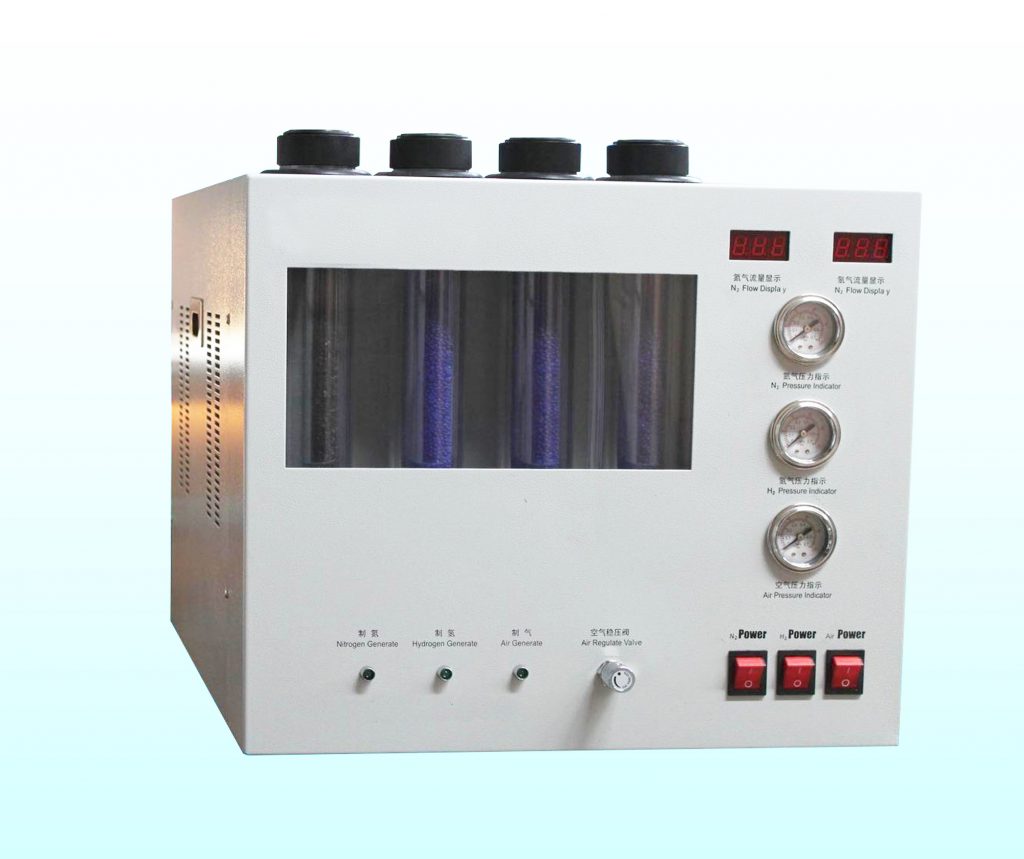Lab nitrogen hydrogen air generator is a laboratory gas source product. Integrating hydrogen gas, air, and nitrogen into one mahine. The safety has been improved compared to traditional laboratory steel cylinders. Therefore, using it instead of laboratory cylinders is an option. It has very simple requirements for the surrounding facilities of the working environment. As long as a standard power supply is provided to operate and continuously generate high-purity gas, air, and nitrogen. The electrolyte uses an alkaline aqueous solution, and a high pH alkaline solution can inhibit the growth of xijun on the electrolytic membrane.
It can avoid electrolytic membrane pollution caused by the growth of microorganisms. And the requirements for water quality of the instrument’s electrolytic membrane are not high, and it will not cause membrane poisoning due to water quality issues. Currently supporting chromatography systems such as Agilent (USA), PE (USA), Varian (USA), Thermo Fisher (USA), Shimadzu (Japan), etc
Instrument features lab nitrogen hydrogen air generator:
- Compact structure, high integration, easy to use, and saves laboratory space.
- Stainless steel gas storage tank, safe and reliable, can replace laboratory steel cylinders.
- Qing gas part: automatic anti alkali, automatic flow tracking, and three-level filtration.
- Nitrogen part: automatic anti alkali, automatic flow tracking, and three-level filtration.
- Air part: Adopting air compressor, stainless steel air storage tank, two-stage voltage stabilization, three-level filtration, and complete protection measures for automatic drainage.
- Laboratory instrumentation can replace traditional high-pressure steel cylinders.
- Can be used alone or simultaneously; The purity of gas production will not decrease.
- Combining the advantages of series generators and similar products, and equipped with multi-level protection devices, it is a safe, reliable, and convenient combination.
- The nitrogen part is a multi-layer plate structure, which adopts a repeated purification method, greatly improving the purity and truly achieving the ideal of two gases and one bottle in the laboratory;
